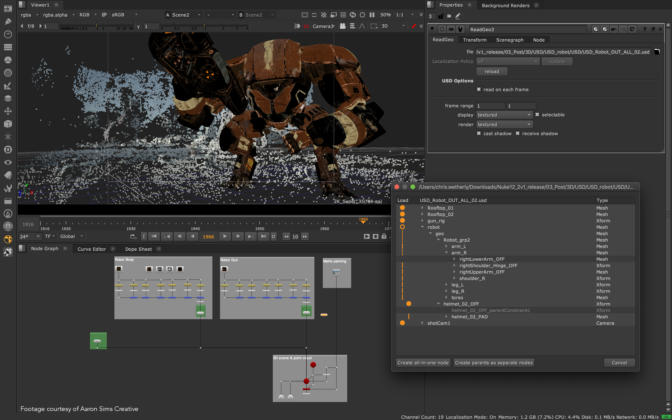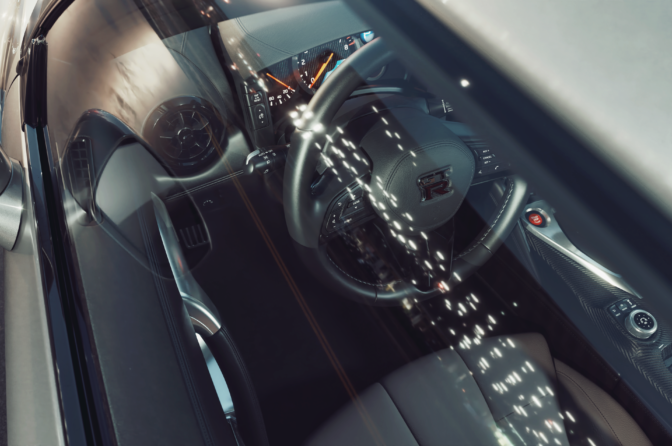Whether tackling complex visualization challenges or creating Hollywood-caliber visual effects, artists and designers require powerful hardware to create their best work.
The latest application releases from Foundry, Chaos Group and Redshift by Maxon provide advanced features powered by NVIDIA RTX so creators can experience faster ray tracing and accelerated performance to elevate any design workflow.
Foundry Delivers New Features in Modo and Nuke
Foundry recently hosted Foundry LIVE, a series of virtual events where they announced the latest enhancements to their leading content creation applications, including NVIDIA OptiX 7.1 support in Modo.
Modo is Foundry’s powerful and flexible 3D modeling, texturing and rendering toolset. By upgrading to OptiX 7.1 in the mPath renderer, Version 14.1 delivers faster rendering, denoising and real-time feedback with up to 2x the memory savings on the GPU for greater flexibility when working with complex scenes.
Earlier this week, the team announced Nuke 12.2, the latest version of Foundry’s compositing, editorial and review tools. The recent release of Nuke 12.1, the NukeX Cara VR toolset for working with 360-degree video, as well as Nuke’s SphericalTransform and Bilateral nodes, takes advantage of new GPU-caching functionality to deliver significant improvements in viewer processing and rendering. The GPU-caching architecture is also available to developers creating custom GPU-accelerated tools using BlinkScript.
“Moving mPath to OptiX 7.1 dramatically reduces render times and memory usage, but the feature I’m particularly excited by is the addition of linear curves support, which now allows mPath to accelerate hair and fur rendering on the GPU,” said Allen Hastings, head of rendering at Foundry.

NVIDIA Quadro RTX GPUs combined with Dell Precision workstations provide the performance, scalability and reliability to help artists and designers boost productivity and create amazing content faster than before. Learn more about how Foundry members in the U.S. can receive exclusive discounts and save on all Dell desktops, notebooks, servers, electronics and accessories.
Chaos Group Releases V-Ray 5 for Autodesk Maya
Chaos Group will soon release V-Ray 5 for Autodesk Maya, with a host of new GPU-accelerated features for lighting and materials.
Using LightMix in the new V-Ray Frame Buffer allows artists to freely experiment with lighting changes after they render, save out permutations and push back improvements in scenes. The new Layer Compositor allows users to fine-tune and finish images directly in the V-Ray frame buffer — without the need for a separate post-processing app.
“V-Ray 5 for Maya brings tremendous advancements for Maya artists wanting to improve their efficiency,” said Phillip Miller, vice president of product management at Chaos Group. “In addition, every new feature is supported equally by V-Ray GPU which can utilize RTX acceleration.”

V-Ray 5 also adds support for out-of-core geometry for rendering using NVIDIA CUDA, improving performance for artists and designers working with large scenes that aren’t able to fit into the GPU’s frame buffer.
V-Ray 5 for Autodesk Maya will be generally available in early August.
Redshift Brings Faster Ray Tracing, Bigger Memory
Maxon hosted The 3D and Motion Design Show this week, where they demonstrated Redshift 3.0 with OptiX 7 ray-tracing acceleration and NVLink for both geometry and textures.
Additional features of Redshift 3.0 include:
- General performance improved 30 percent or more
- Automatic sampling so users no longer need to manually tweak sampling settings
- Maxon shader noises for all supported 3D apps
- Hydra/Solaris support
- Deeper traces and nested shader blending for even more visually compelling shaders
“Redshift 3.0 incorporates NVIDIA technologies such as OptiX 7 and NVLink. OptiX 7 enables hardware ray tracing so our users can now render their scenes faster than ever. And NVLink allows the rendering of larger scenes with less or no out-of-core memory access — which also means faster render times,” said Panos Zompolas, CTO at Redshift Rendering Technologies. “The introduction of Hydra and Blender support means more artists can join the ever growing Redshift family and render their projects at an incredible speed and quality.”
Redshift 3.0 will soon introduce OSL and Blender support. Redshift 3.0 is currently available to licensed customers, with general availability coming soon.
All registered participants of the 3D Motion and Design Show will be automatically entered for a chance to win an NVIDIA Quadro RTX GPU. See all prizes here.
Check out other RTX-accelerated applications that help professionals transform design workflows. And learn more about how RTX GPUs are powering high-performance NVIDIA Studio systems built to handle the most demanding creative workflows.
For developers looking to get the most out of RTX GPUs, learn more about integrating OptiX 7 into applications.
Featured blog image courtesy of Foundry.
The post Top Content Creation Applications Turn ‘RTX On’ for Faster Performance appeared first on The Official NVIDIA Blog.
